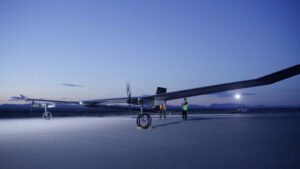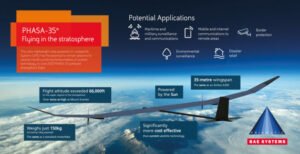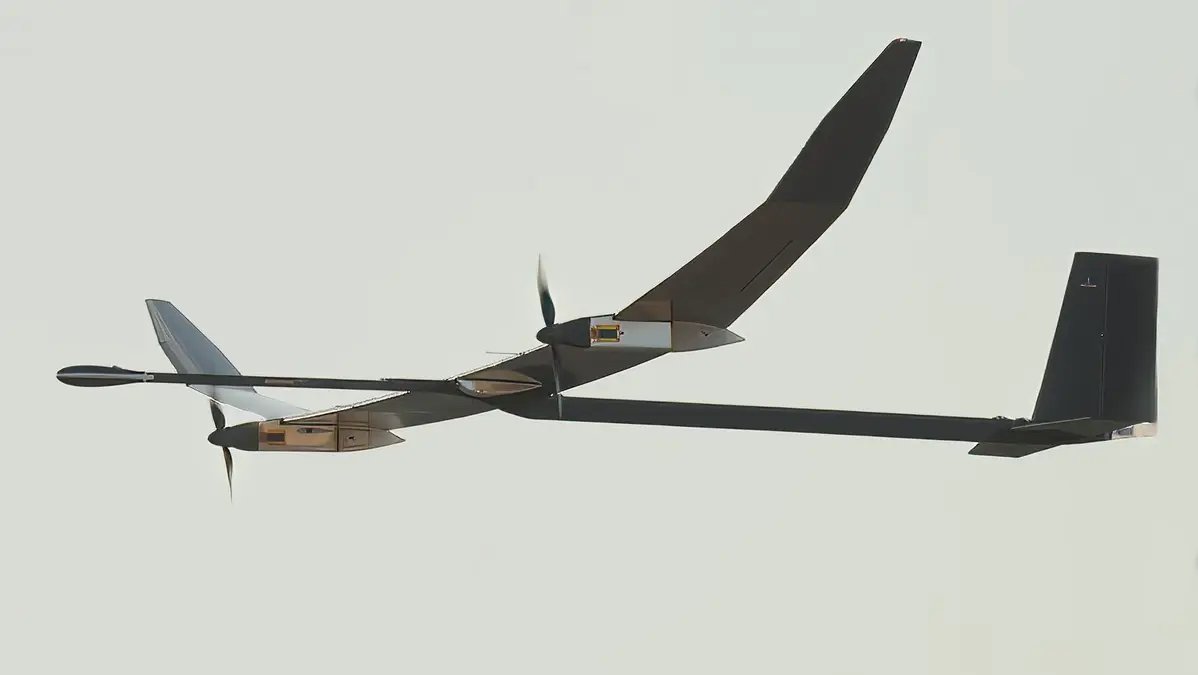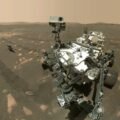A high-altitude aircraft that travels at greater altitudes than any commercial aircraft and most military aircraft while using only solar power has completed its first successful flight deep into the stratosphere. Built by BAE systems, the PHASA-35 (Persistent High-Altitude Solar Aircraft) passed its first high-altitude test last month over the White Sands Missile Missile Range in New Mexico by reaching an altitude of 66,000 feet before coming in for a safe landing.
While still in the testing phase, the company says that the long-range plans for PHASA-35 include a wide range of civilian and military applications.
Solar Powered High Altitude Aircraft Can Fly Through the Day and Night
Along with operating at such a high altitude, which is an area reserved for high-altitude balloons or select military aircraft, the PHASA-35 is equipped with solar panels on both of its wings. Sporting a 115-foot wingspan, this means that the unmanned craft can fly by solar power during the day and then run on batteries charged by the sun at night
“Stratospheric flight requires either a non-existent super fuel or daily refueling capability,” explained BAE Systems PHASA-35 head of business development, Phil Varty. “We effectively refuel using solar panels, recharging the batteries we discharge overnight.”
The PHASA-35, which is housed within the company’s Falconworks lab, is also extremely light, weighing only 330 lbs. due to advanced composite materials, and can carry a 33 lbs. payload.
Of course, the amount of energy used to cruise at these extreme altitudes is still a real challenge, limiting the length of overall time the aircraft can stay aloft before needing to come down and recharge. However, BAE says the goal of their high-altitude aircraft is to one day be able to stay up in the stratosphere for a full year non-stop.


More Unmanned Stratosphere Capable High Altitude Aircraft in the Works
While the PHASA-35 is on the cutting edge of high-tech aviation, the craft is not alone in its lofty ambitions. Airbus is working on a similarly solar-powered high-altitude craft known as Zephyr, and Boeing has their own entry called the Odysseus.
Back in 2018, Zephyr was the first “unfueled” aircraft to fly for 26 days straight before having to land. Like the PHASA-35, the Zephyr traveled well above the weather and commercial traffic in that record-setting flight, reaching just over 59,000 feet in altitude. Since then, the craft has increased its range and altitude, traveling higher and farther than any other unmanned solar-powered craft.
“(Zephyr’s) persistence enables a capability of flying continuously for months at a time, at around 70,000ft, above weather and conventional air traffic,” explains the company’s website.
Originally designed by Aurora Space Systems before being acquired by Boeing in 2017, the Odysseus was actually inspired by a completely different unfueled flight that took place way back in 1988. Dubbed the Daedalus, that aircraft was powered by the pilot peddling his way through the sky over a 72-mile flight from the Greek islands of Crete and landing in Santorini.
“We’re creating advanced autonomous flight technologies that will change the world,” said Kia Zivari, Aurora’s autonomy integration and test center project lead on the company’s website.
Like the BAE system pseudo drone, both of these crafts are reportedly racing to reach and surpass the 1 –year continuous flight barrier.
Flights into the Stratosphere Could Dramatically Impact a Number of Industries
According to BAE systems subsidiary Prismatic, which is in charge of the PHASA-35 program, this latest successful flight is just the next step toward a commercially available vehicle that could offer unique capabilities to a number of customers and industries.


For example, PHASA-35 could operate like a military craft by offering support for intelligence, surveillance, and reconnaissance operations. Such long-duration high-altitude capabilities in an unmanned craft are coveted by military forces around the world who are looking for cheaper, more effective solutions to launching satellites into space or sending aircrew into dangerous situations.
In the civilian sector, these long-duration Stratosphere-hugging aircraft could supply communications capabilities to customers that may not have access to traditional services. BAE Systems also said this type of capability could prove critical in areas like disaster relief or border protection or can even be equipped to offer 4G and 5G services.
“This is a fantastic achievement for everyone involved and shows the commitment of BAE Systems to invest in new technologies and markets,” said Dave Corfield, CEO of Prismatic of the recent test flight. “PHASA-35’s first stratospheric flight demonstrates that this vehicle is on track to become the go-to system for long endurance, high altitude, and communications applications in the future.”
“PHASA-35 is breaking new ground – opening up the stratosphere to new possibilities,” added Cliff Robson, Group Managing Director for BAE Systems Air Sector.
Christopher Plain is a Science Fiction and Fantasy novelist and Head Science Writer at The Debrief. Follow and connect with him on Twitter, learn about his books at plainfiction.com, or email him directly at christopher@thedebrief.org.

